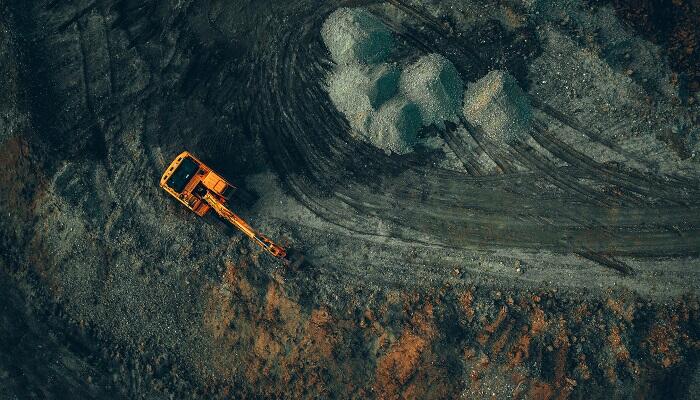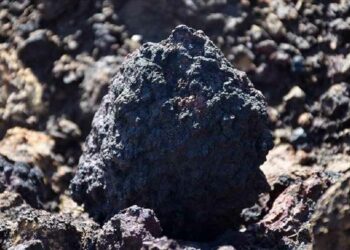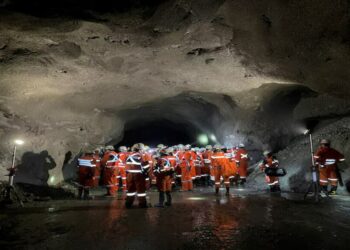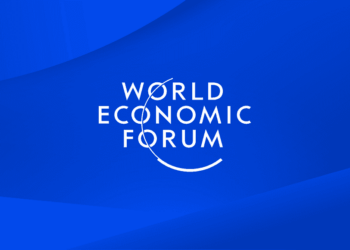As the world races towards a greener future, a major challenge threatens to derail the global energy transition: a looming copper supply crunch. This metal, now referred to as “the new oil,” is at the heart of renewable energy technologies, electric vehicles, and the expansion of power grids. However, the mining industry is struggling to keep pace with demand, creating supply constraints and price pressures.
Solaris Resources and the Warintza Project: A Bright Spot in Copper Exploration
The Warintza Project, owned by Solaris Resources, is located in southeastern Ecuador. This copper porphyry deposit could be a major opportunity to bolster global copper supplies. The company recently issued a mineral resource estimate for its Warintza Project with 2.34 bln tonnes grading 0.43% CuEq (M&I,I) including 427Mt at 0.71% CuEq (M&I) and 177Mt at 0.62% CuEq (Inferred) at a higher cut-off grade of 0.50% CuEq, reflecting the near surface higher-grade mineralization which could be leveraged into a starter pit to further improve the project economics.
The updated MRE supports the view that the project is one of the largest undeveloped copper projects globally while setting a strong foundation for further resource updates. The company has an ongoing drill program with over 30,000m planned in H2/24 targeting open extensions of mineralization and also upgrading its mineral resources in support of an ongoing Pre-Feasibility Study (PFS) that it plans to complete in H2/25.
Large-scale copper porphyry deposits, like Warintza, not already owned by major mining companies hold strategic value due to scarcity, size, and economies of scale, polymetallic characteristics, and amenability to large-scale conventional open-pit mining.
Solaris is also actively exploring the broader Warintza district with many near-mine targets. Concurrent district exploration programs are targeting complementary discoveries from an expanded portfolio of epithermal gold/silver and porphyry copper targets.
The Copper Supply-Demand Imbalance
Copper demand is projected to rise by 23% by 2030, driven primarily by the global energy transition and continued economic growth in emerging markets. Meeting net-zero carbon emission targets by 2035 could potentially double annual copper demand to 50 million metric tons. This surge is fueled by the electric vehicle revolution, renewable energy infrastructure expansion, the AI-driven boom in data centers, and ongoing urbanization and industrialization in emerging markets.
The copper mining industry faces numerous hurdles in expanding production. Declining discovery rates of new deposits, lengthy permitting processes, rising capital costs, and geopolitical risks in copper-rich regions all contribute to the supply crunch. Traditional copper powerhouses like Chile and Peru are grappling with various issues, including aging mines, rising costs, and social unrest.
Bank of America forecasts a copper market deficit of 324,000 tonnes in 2024, growing to 743,000 tonnes by 2026. Goldman Sachs estimates that addressing the expected annual supply shortfall of 8 million tons over the next decade would require the copper industry to invest $150 billion. Regulatory approvals for new copper mines have fallen to their lowest level in 15 years.
Technological Innovations in Copper Mining
To address these challenges, the mining industry is turning to innovative technologies. Advanced leaching techniques are being explored to extract copper from low-grade sulfide deposits. Mines are integrating automation, robotics, and electrification to enhance efficiency and sustainability. Other innovations include bio-surfactants to increase copper yields, coarse particle recovery technologies, vertical roller mills to reduce energy consumption, and “copper sponge” technology to streamline extraction processes.
Copper recycling can also help, with approximately 32% of annual copper use coming from recycled sources. An estimated two-thirds of the 690 million tonnes of copper produced in the last century are still in productive use, forming an “urban mine” of potential recyclable material. E-waste recycling presents a particularly promising opportunity, as waste printed circuit boards can contain up to ten times more copper than rich-content minerals.
There are both opportunities and risks for investors in this industry. Copper mining equities provide exposure to the green energy transition, with companies holding existing mines, expansion projects, or promising exploration prospects well-positioned to benefit from rising copper prices.
Addressing the copper supply crunch will require a multi-faceted and dedicated approach, with aggressive development of new deposits, technological innovation, expansion of recycling capabilities, supportive policies, and strategic investments to mitigate geopolitical risks. Projects like Solaris Resources‘ Warintza Project define the type of high-potential copper resources needed for addressing the supply deficit and are ideally suited as an M&A target offering exposure to high-grade, district-scale porphyry potential with access to infrastructure.










